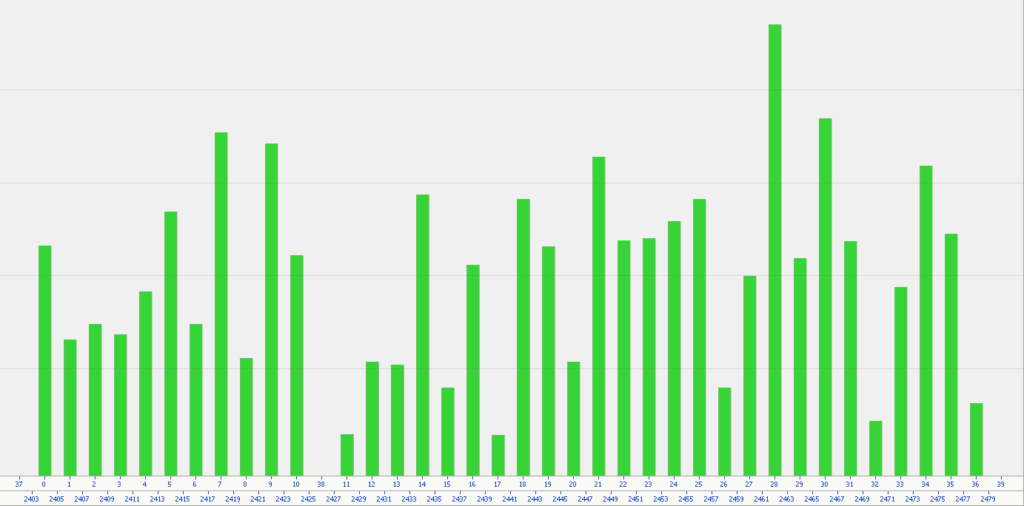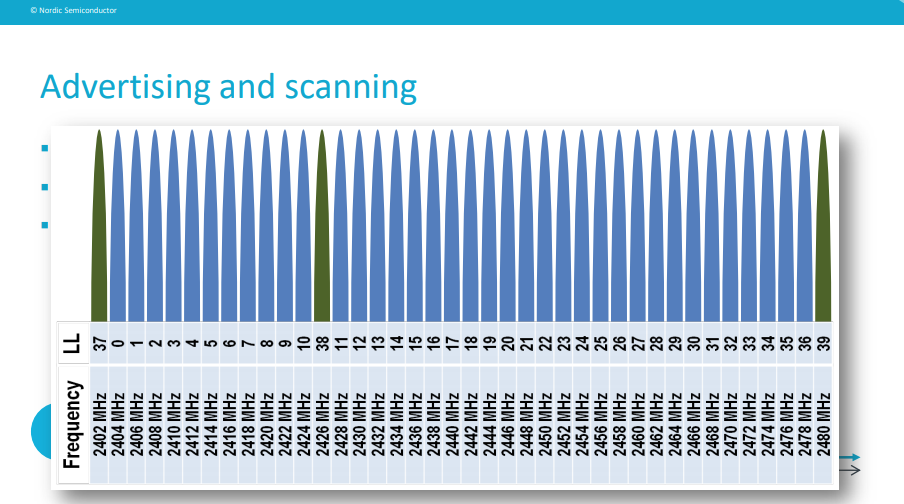There’s a recent post by the Bluetooth SIG on How Bluetooth Technology Uses Adaptive Frequency Hopping to Overcome Packet Interference.
When two or more wireless devices transmit on the same frequency, if the transmissions overlap in time then the signal is corrupted. Bluetooth reduces such collisions by using 40 different frequencies called channels. A technique called adaptive frequency hopping (AFH) allows Bluetooth devices to avoid channels that are noisy or busy.

Of the 40 channels defined for use by Bluetooth Low Energy (LE), 37 of these channels are available for use during connected communication.

Of the 40 channels, 3 are used for (one way) advertising and 37 for (two way) connections. In the case of beacons, they spend most of the time advertising sequentially on channels 37, 38 and 39. Connections and hence AFH are only usually used when setting up the beacons using manufacturers’ apps.